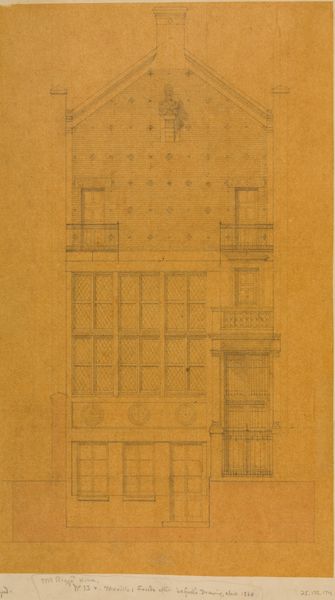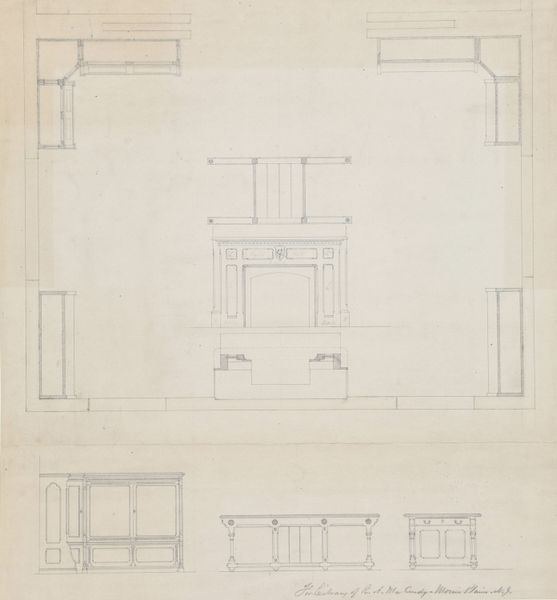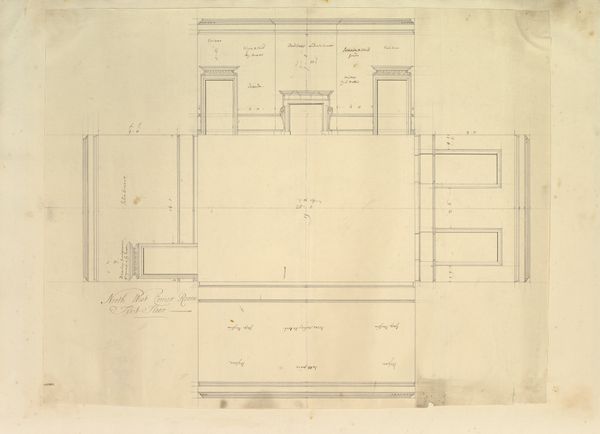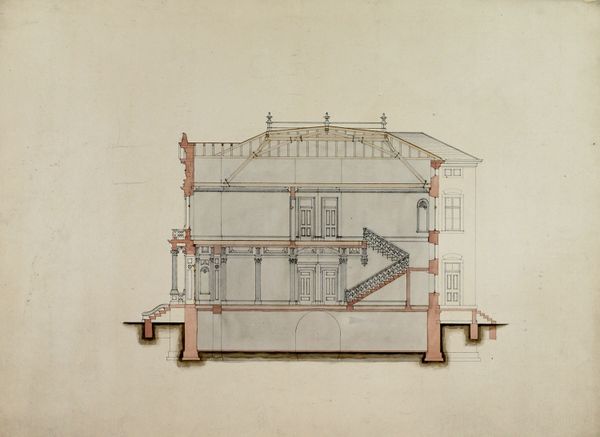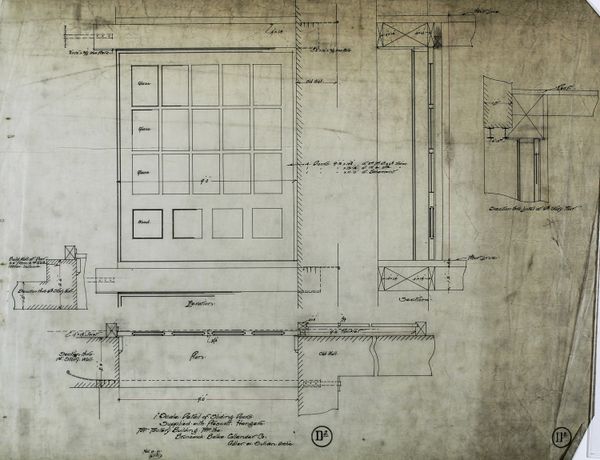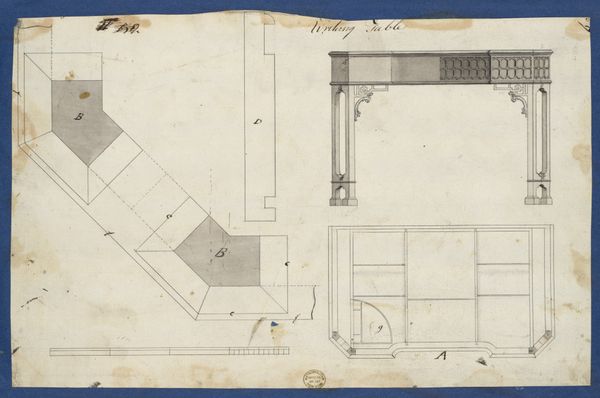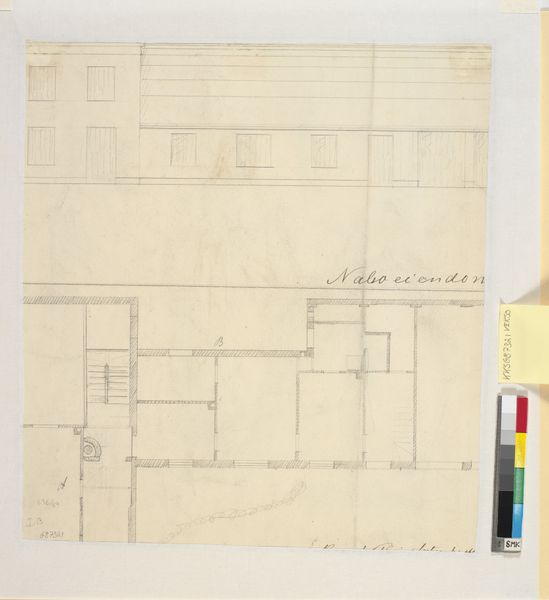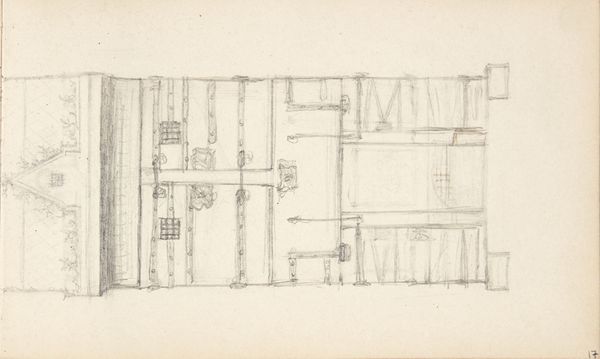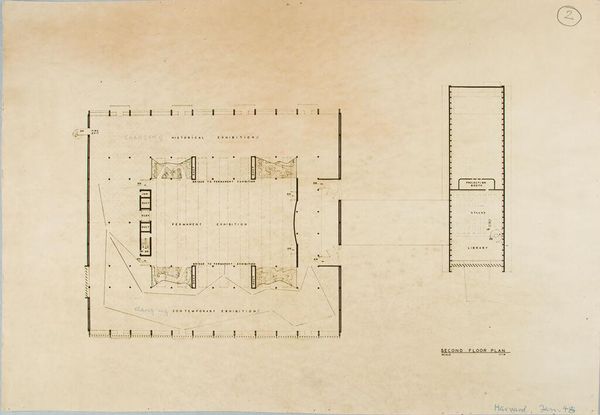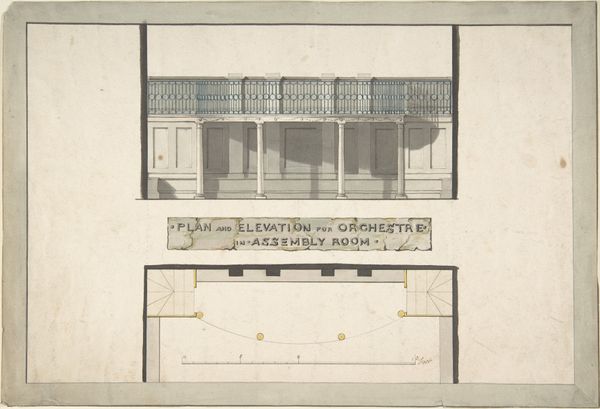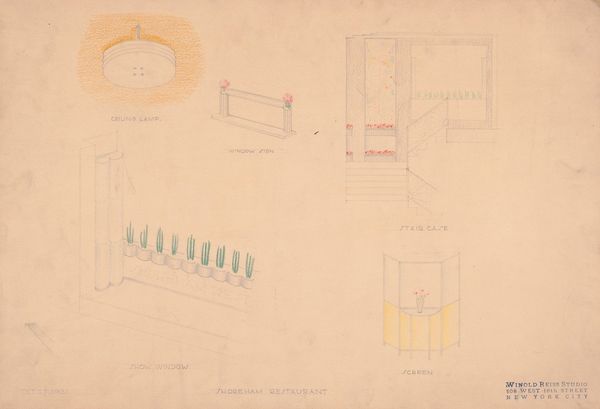![Designs for unidentified restaurant interior, possibly Elysée restaurant, 1 East 56th St., New York, NY.] [Drawing of restaurant details by Winold Reiss](/_next/image?url=https%3A%2F%2Fd2w8kbdekdi1gv.cloudfront.net%2FeyJidWNrZXQiOiAiYXJ0ZXJhLWltYWdlcy1idWNrZXQiLCAia2V5IjogImFydHdvcmtzLzZlN2ZhNjU2LWQyOWQtNDRiYS1hY2NlLWQ1ZmUwZjQ2Zjc0OS82ZTdmYTY1Ni1kMjlkLTQ0YmEtYWNjZS1kNWZlMGY0NmY3NDlfZnVsbC5qcGciLCAiZWRpdHMiOiB7InJlc2l6ZSI6IHsid2lkdGgiOiAxOTIwLCAiaGVpZ2h0IjogMTkyMCwgImZpdCI6ICJpbnNpZGUifX19&w=3840&q=75)
Designs for unidentified restaurant interior, possibly Elysée restaurant, 1 East 56th St., New York, NY.] [Drawing of restaurant details 1910
0:00
0:00
drawing, architecture
#
drawing
#
geometric
#
cityscape
#
watercolor
#
architecture
Copyright: Public Domain: Artvee
Curator: This is a design drawing by Winold Reiss from 1910, likely a proposal for the Elysée restaurant here in New York. It is a detailed exploration in watercolor and ink on paper, depicting the restaurant's interior. Editor: My first thought is of its surprisingly cool and calming geometry, it is dominated by those striking blue grids. Very architectural, almost severe, but there’s a softness from the pale wash. Curator: Absolutely. Reiss meticulously balances a rigid structure with an expressive use of color. Note the repetition of rectangles and squares; it’s a play on positive and negative space. He is very committed to his geometric vocabulary in this early work. Editor: Which gives us insight into what restaurant patrons may have unconsciously absorbed at the time. This grid is not merely a functional architectural element; it evokes both confinement and infinity. It speaks, in the early 20th century, to urban expansion but simultaneously, the alienating impact of standardized spaces on the individual. Curator: Interesting interpretation. For me, I find the cool tonality equally fascinating, in considering spatial experience. Blue signifies depth, airiness, which tempers any sensation of rigidity. The use of subtle lines further flattens depth and perception, disrupting easy categorization or hierarchies. Editor: Blue as the color of serenity also carries sacred associations—connecting to royalty, the heavens, an unspoken aspiration for the high life embodied in a restaurant's aspiration. These are all deeply aspirational associations to attract the aspiring diner. Even today, one would look to an experience in such an interior. Curator: I am compelled by how Reiss teases the boundary between abstraction and representation. It operates on a threshold—one has access through windows and doors, but there are barriers, walls and spaces. Editor: Ultimately, both these readings seem relevant, perhaps a perfect duality for interpreting Reiss’ spatial vision in the restaurant trade! Curator: A perfectly resonant space, then, with a lasting conversation about urban expansion.
Comments
No comments
Be the first to comment and join the conversation on the ultimate creative platform.
